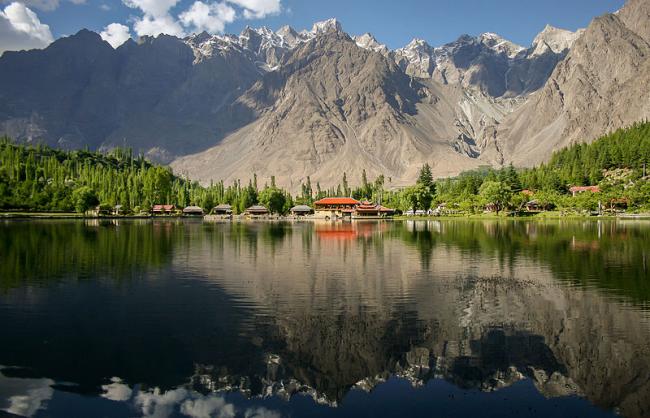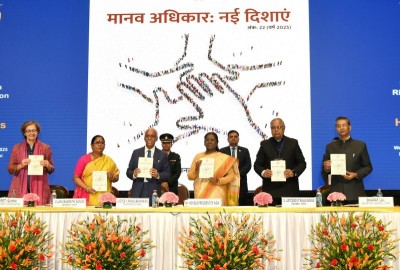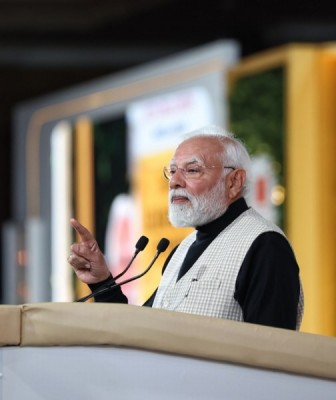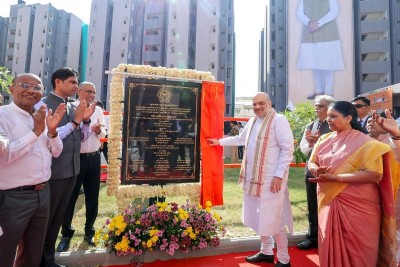
A Nursery of Terrorism
Brian Douglas Williams, NBC News
The new chief of Afghan Taliban Mullah Haibatullah Akhundzada is a product of Pakistani madrassas (religious seminaries) and still leads a string of madrassas across Pakistan's south-western Balochistan. Akhundzada succeeded Mullah Akhtar Mansour who was killed in a U.S. drone strike on May 21, 2016.
Media reports in May 2016 quoted a senior counter-terrorism (CT) officer indicating that a confidential report titled "Proscribed/Jihadi Organizations" noted that major banned outfits in the country were still recruiting madrassa students to wage jihad in Afghanistan and Kashmir, and that such non-state actors had become very dangerous for Pakistan as well. In the secret document, consisting of 111 pages, the Counter Terrorism Department (CTD), Punjab, disclosed that 32 proscribed organizations and nine of their splinters groups had become "a nursery of terrorism in Pakistan." Banned organizations like Islamic State (Daesh) and Hizb-ut-Tahrir (HuT) had also gained ground, establishing special wings in the country, with their 'commanders' recruiting terrorists. Adjacent areas of Bahawalpur, Muridke, Sialkot and some southern Districts of Punjab - long dominated by prominent domestic terror formations such as Lashkar-e-Taiba - have now become a breeding ground for these foreign formations.
In a bid to target domestic terrorism and restore a measure of peace after the December 16, 2014, Peshawar school attack, the Government initiated a 'crackdown' on madrassas under the National Action Plan (NAP). On February 24, 2016, the Government shutdown 254 suspected and unregistered madrassas across the country, Minister of State for Interior and Narcotics Control Balighur Rehman told the National Assembly. He stated that 167 suspect seminaries including 72 that are unregistered in Sindh, 13 in Khyber Pakhtunkhwa (KP), and two in Punjab have been closed. "The government is countering hate speech and banning dissemination of extremist material," he added. Regarding registration and regulation of seminaries, the State Minister claimed that the Government had completed 100 per cent mapping on agreed parameters in Islamabad and Punjab. Eighty per cent of the mapping exercise had been completed in Sindh, followed by 75 per cent in KP and 60 per cent in Balochistan. Rehman disclosed, further, "There are 190 foreign-funded seminaries in the country, of which 147 are in Punjab, 30 in Balochistan, seven in KP and six in Sindh."
The Madrassa Reforms Project, which was initiated by then President General Pervez Musharraf in the wake of the Lal Masjid debacle July 2007, is still incomplete despite the lapse of nine years. Under the project, some 8,000 Islamic seminaries, about 1.6 million students and approximately 120,000 teachers of these madrassas were to be registered, but only 432 madrassas have yet been registered and, of them, just 36 are getting funds from the Ministry of Religious Affairs.
The number of madrassas in Pakistan has crossed 35,000, from fewer than 300 at the inception of Pakistan, according to a report issued in Karachi on July 30, 2015. Titled,The Madrassa Conundrum - The state of religious education in Pakistan, the report is authored by Umair Khalil, lead researcher of the non-governmental research organisation, HIVE. According to the report, "After 11 years of Zia's rule, the madrassa total ballooned to 2,801 with Deobandis accounting for 64 per cent of the total and the Barelvis only 25 per cent." After Zia's death, the state continued to retain an interest in supporting a particular religious group to play a role in the ongoing proxy war with India for Kashmir. The increase in the number of madrassas between 1988 and 2002 showed a significant rise in Deobandi seminaries, which increased from 1,779 to 7,000. Barelvi seminaries rose from 717 to 1,585; Ahle Hadith from 161 to 376; Shia from 47 to 419; and Jamaat-e-Islami from 97 to 500. The total number of madrassas in 1988 was 2,801, which shot up to 9,880 in 2002.
According to the Ministry of Religious Affairs Data, the cumulative figure of registered and unregistered madrassas in Pakistan is 34380. While, 14,768 madrassas in Punjab, 7,118 in Sindh, 2,704 in Balochistan, 1,354 in KP and 187 madrassas in Islamabad are registered, 4,135 in KP, 2,411 in Punjab, 1,406 in Sindh, 266 in Balochistan and 31 in Islamabad are unregistered. Meanwhile, the registered madrassas across Pakistan according to the Provincial Home Departments is 35,337 out of which 16,000 madrassas in Punjab, 13,000 in Balochistan, 3,136 in KP, 2,800 in Sindh and 401 in Islamabad. Around 3.5 million students are currently perusing a religious education in 35,337 madrassas affiliated with Ittehad-e-Tanzeemat-e-Madaris Pakistan (ITMP) - an umbrella of the five schools of Islamic jurisprudence.
An April 28, 2016, media report claimed that the number of madrassas in the country, as well as the number of students enrolled in them, continues to rise. Even though seminary boards offer different reasons for the growing number of students and institutions in the country, the administrators of all five mainstream seminary boards believe that a lack of a clear policy was augmenting negative growth as well. Sahibzada Abdul Mustafa Hazarvi, Nazim-e-Ala (President) of the Tanzeem-ul-Madaris Ahl-e-Sunnat, the board for seminaries affiliated with the Barelvi school of thought thus noted, "The Government is not doing anything, but it wants the five boards and the seminaries registered with us to be as perfect as a polished shoe... It was only due to misconduct that Wifaqul Madaris al-Arabia delisted Jamia Hafsa [the madrassa attached to Lal Masjid] in Islamabad in 2007, in wake of anti-state political activities. But what have the authorities done? The seminary still continues to hold classes, is increasing its branches, enhancing the number of students and even criticises the board for not registering it - this is the writ of Government in Islamabad." Mustafa disclosed that there were around 9,000 madrassas affiliated with the Barelvi school of thought, imparting religious education to more than 1.3 million students. He said that there has been an increase of 10 per cent in the number of seminaries and students as compared to the previous year.
About 24,000 madrassas in Pakistan are funded by Saudi Arabia which has unleashed a "tsunami of money" to "export intolerance", American senator Chris Murphy observed on January 29, 2016, in an address to the Council on Foreign Relations, adding that the US needs to end its effective acquiescence to the Saudi sponsorship of radical Islamism. Murphy noted, further, "In 1956, there were 244 madrassas in Pakistan. Today, there are 24,000. These schools are multiplying all over the globe. These schools, by and large, don't teach violence. They aren't the minor leagues for al-Qaeda or ISIS. But they do teach a version of Islam that leads very nicely into an anti-Shia, anti-Western militancy". Senator Murphy asserted that Pakistan was the best example of places where money coming from Saudi Arabia is funnelled to religious schools that nurture hatred and terrorism. According to some estimates, since the 1960s, the Saudis have funnelled over USD 100 billion into funding schools and mosques all over the world with the mission of spreading puritanical Wahhabi Islam. As a point of comparison, researchers estimate that the former Soviet Union spent about USD 7 billion exporting its communist ideology from 1920-1991. "Less-well-funded governments and other strains of Islam can hardly keep up with the tsunami of money behind this export of intolerance," Murphy concluded.
John Cassara, a former US Intelligence Officer and Treasury Special Agent told members of the House Financial Services Committee during a Congressional hearing on February 3, 2016, that radical Pakistani madrassas were engaged in massive trade-based money laundering (TBML) to fund jihadist groups: "It was engaged in a side business dealing in animal hides. In order to justify the large inflow of funds, the madrassa claimed to sell a large number of hides to foreign customers at grossly inflated prices. This ruse allowed the extremists to 'legitimise' the inflow of funds which were then passed to terrorists."
Sartaj Aziz, the Prime Minister's Advisor on Foreign Affairs, stated, on March 4, 2016, that the madrassas along the Af-Pak border and tribal areas, in particular North Waziristan, had become a hub of terrorist activities. These madrassas had a well-oiled terror infrastructure beyond imagination, running bomb-making factories, terrorist training centres and centres to train suicide bombers - all in multi-storied basements under mosques. giving details of the how deep rooted terror infrastructure had developed in Pakistan, Aziz added, "In one mosque that I visited, I remember, in Miranshah, from outside we did not see anything. But under the mosque there was a 70-room basement, three stories, in which there were four-five IED factories, four-five suicide training centers, communication network, VIP room, conference rooms, amazing infrastructure."
Astonishingly, Aziz blamed Afghan refugees, who entered the country when the US pushed the Taliban out of power after the 9/11, for these developments. These madrassas, he argued, were jointly "funded, armed and created" by the US and Pakistan to train people to fight against the Russians in Afghanistan. He further stated, "We have about 75,000 unregistered madrassas", where people are trained, brainwashed, and prepared for terrorist activities.
The Pakistani state perspective is disingenuous, and seeks to evade the fundamental fact that the madrassas which had been producing radicals have long been its own assets, exploited as an instrument of geostrategic extension. In its report, 'Pakistan's Jihadist Heartland: Southern Punjab', released on May 30, 2016, the International Crisis Group (ICG) observes, "Continued state sponsorship remains a source of empowerment for groups that fall under the category of "good" jihadists, such as the Jaish, which has networks across the province." The report further added that "The region hosts two of Pakistan's most radical Deobandi groups, Jaish-e-Mohammed, held responsible by India for the January 2, 2016 attack on its Pathankot airbase; and the sectarian Laskhar-e-Jhangvi (LeJ), which was at least complicit in, if not solely responsible for, the March 27 Easter Sunday attack that killed more than 70 in Lahore."
ICG confirms that the Jaish-e-Mohammad's infrastructure at Bahawalpur is intact, including its sprawling headquarters at the Usman-o-Ali Madrasa and other mosques and madrassa across the District. A Federal Minister and Member of Parliament from Bahawalpur, Riaz Husain Pirzada concurs, "the breeding grounds remain; the [sectarian] madrassa are still being financed." According to local observers, the Jaish also continues to run a prominently-located training cell on a main Bahawalpur road toward Ahmedpur tehsil [revenue unit], which attracts young (often teenaged) recruits from around southern Punjab, ICG adds.
Worse, there is no possibility of any effective action against what are conceived of as pro-establishment and anti-Indian armed formations in the province. Punjab Law Minister Rana Sanaullah, on May 17, 2016, thus declared, "legal action against militant groups such as Jamaat ud Dawa (the parent organisation of the Lashkar-e-Taiba) and Jaish-e-Mohammad (JeM) is not possible as the state itself is involved."
In 2013, the same Punjab Government allocated more than PKR 61 million in the budget for fiscal 2013-14 for 'Markaz-e-Taiba', JuD's largest centre. In 2009-10, the Government provided more than PKR 82 million for the administration of JuD facilities. In fiscal 2010-11, Chief Minister Shehbaz Sharif, using his discretionary powers, allocated two separate grants for JuD facilities. The Government granted PKR 79.8 million for six organisations at Markaz-e-Taiba and a special grant-in-aid of PKR 3 million for JuD's Al-Dawa School System in several Districts of Punjab.
Pakistan's two faced strategy on terrorism remains deeply entrenched in the state apparatus, and as long as madrassas and other religious institutions continue to be used to raise armies of terrorists to direct against Afghanistan and India, a spillover into Pakistani territory will inevitable continue. Despite periodic and loud lamentations, this appears to be a price Islamabad remains willing to pay for its overreaching and improbable regional ambitions.
Image: Wikimedia Commons
Support Our Journalism
We cannot do without you.. your contribution supports unbiased journalism
IBNS is not driven by any ism- not wokeism, not racism, not skewed secularism, not hyper right-wing or left liberal ideals, nor by any hardline religious beliefs or hyper nationalism. We want to serve you good old objective news, as they are. We do not judge or preach. We let people decide for themselves. We only try to present factual and well-sourced news.







